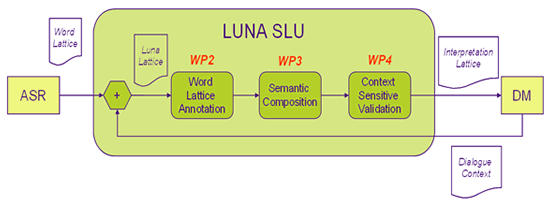Spontaneous language understanding is far more advanced than the traditional interactive voice response (IVR) systems that people may already be familiar with. In traditional IVRs, the user is required to answer questions with specific words or short sentences proposed by the systems.
But with SLU, language systems are designed to respond to spontaneous speech: real conversations between people that include the sentence fillers and pause words like ‘um’ and ‘er’.
Once computers can understand real language, they can translate. And then do it in real time. Next step: a Babel fish(*), we hope.

You know what I mean?
“With spontaneous language understanding, machines know the meaning of what you are saying, it is considerably more intuitive and pleasant than simple menu-driven speech applications,” explains Silvia Mosso of Loquendo in Italy which is coordinating the research.
Up to now, these sorts of systems have been unavailable in Polish or Italian, but the EU-funded Luna project has created fully functional prototypes that should be ready for commercial development shortly after the project finishes later in 2009.
LUNA is a three-year project focused on the problem of real-time understanding of spontaneous speech in the context of advanced telecom services. The main objective is the creation of a robust natural spoken language understanding toolkit for multilingual dialogue services, able to carry out human-computer communication with a good degree of user satisfaction. This would allow easy human-machine interactions through spontaneous and unconstrained speech, replacing menu-driven voice recognition.
To achieve this level of sophistication, the project investigated language and semantic modelling for speech understanding, and research into automatic learning, where the software ‘studies’ a series of sample conversations, called a corpus.
Finally, the scientific team looked at making the system robust and studied the portability of Luna components across the languages. The upshot is that it will be easier to take the advances developed in the project and apply them to other languages.
SLU systems already exist for languages like English and French, but Luna’s work means it will be easier to apply these techniques to a host of other languages, and Italian and Polish were a test run.
Original conversations
The polish system will be used for public transport. “People will be able to ring a public transport company and get travel information for their itinerary. The Italian system will focus on an IT helpdesk service for a public administration.
“So people will be able to call and say ‘my printer is not working,’ and they will be able to get help for that,” reveals Mosso, Luna’s coordinator. “The advantage is that these systems can be applied to other types of helpdesks, or other types of transportation.”
It will still be necessary to record the original conversations, which ‘teach’ the machine the correct responses, for any target language, but the Luna system means that it will become much easier to create high-performance automatic telephone services.
The Luna project received funding from the ICT strand of the Sixth Framework Programme for research.
NOTES:
(*) The Hitchhiker's Guide to the Galaxy kind and not the Norwegian band.
More from ICT
More on Luna.





Comments